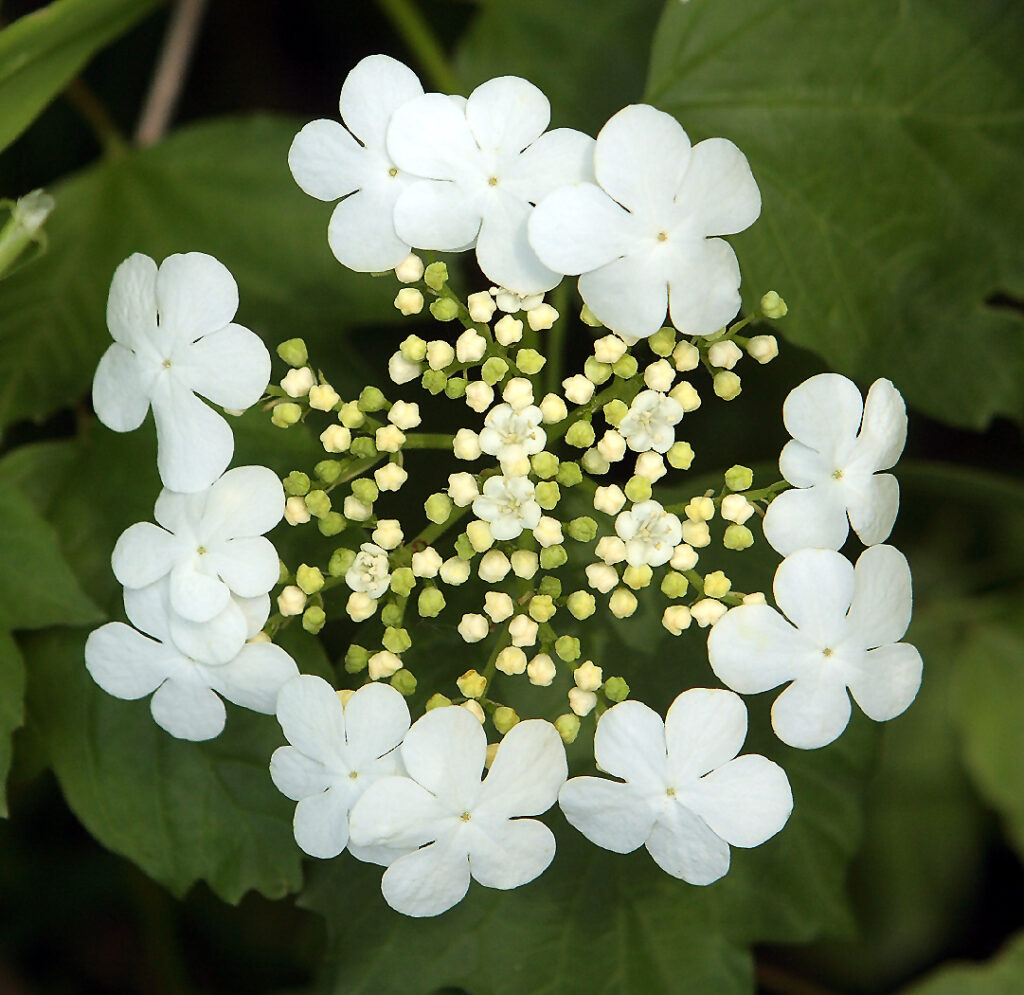The highbush cranberry plant, also called American cranberry bush, is a shrub from the
genus Viburnum of the Caprifoliaceae, or Honeysuckle family. It is not actually related to the cranberries.
The bush grows up to 8 to 15 ft. in height with a 8 to10 ft. spread and forms a rounded shape. The flowers of the highbush cranberry shrub usually appear after the leaves emerge (May to June) and occur as flat clusters 2 to 5 inches across. The flowers themselves are 5-petaled and come in two different forms on the same plant. Around the edge of the cluster, large white flowers surround numerous tiny white flowers. The smaller flowers in the center are the fertile ones that will produce fruit, and it’s likely the larger ones attract pollinators. The fruit is a shiny sphere called a drupe that has a fleshy outside and large stone inside (much like plums or cherries). The fruit is ¼ to ½ inch wide and it turns bright red when ripe.
The single stone is large, yellowish, flat, and contains the seed or seeds inside it.






